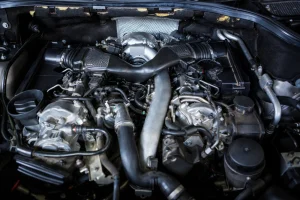It is apparent even to a layman that keeping the engine cool as prescribed by its specifications is indispensable. The Horton Fan Clutch does exactly the same for your truck engine. In spite of being an important component of the cooling system, it is often overlooked and least maintained. Engaging/disengaging the engine fan with a clutch controlled by the air-actuated valve is the primary function of the Horton Fan Clutch. In modern vehicles, the valve receives the signals to switch on and off from the engine. While in most of the vehicles a manual switch overrides the signaling. The driver can activate the fan in case of need, approaching a hill, for instance, to lessen the engine’s temperature. Diesel Components Inc provides different types of Horton fan clutch for sale with the best quality and pricing. Understanding its function will help you to choose the most suitable one for your vehicle.

How fan clutch works
Based on their functional principles Horton Fan Clutch comes in three variants.
- Thermal fan clutch: These fan clutches sense the temperature of the air behind the radiator and changes the fan speed accordingly. They come with two-speed variations high speed (engaging) and low speed (disengaging).
- At engaging speed, the fan clutch provides cooling to the maximum capacity.
- At disengaging speed, the fan clutch reduces the noise and provide fuel monitoring.
- Non-thermal fan clutch: These fan clutches are always engaging and are low-cost alternatives for your vehicle. However, they cannot replace the heavy-duty clutches.
- Electronic fan clutch: In these fan clutches the electronic clutch engagement is controlled by a signal to the internal solenoid to open up. The silicone drive fluid is passed between the storage reservoir and the area that triggers the clutch to engage.
You can choose the Horton fan clutch for sale, according to your vehicle’s need and your resources.
Troubleshooting Horton Fan Clutch
Any harm to the fan clutch can cause the system meltdown. The Horton fan clutch troubleshooting helps to determine what went wrong.
-
Fan blades
Any obstruction to the fan blade should be located and removed. The fan blade should also be examined for any crack or split. This might cause the blade to run out of balance.
-
Clutch slippage
Clutch slippage is actually the partial engagement or partial disengagement. If the air is leaking past the solenoid valve into the airline, pressure builds up. This causes partial engagement. Sometimes the pressure drops due to the inoperative solenoid, airline blockage, up-stream air leaks, or air leaks from fan clutch body. This creates disengagement and causes clutch slippage.
-
Maintenance
A routine inspection of the Horton Fan Clutch can help in preventing any meltdown. Regular maintenance for Horton fan clutch troubleshooting can be done in simple steps.
-
- Remove airlines and plug them at the input of the fan clutch.
- Loosen the fan belts. While rotating the pulley, you should feel the smooth rotation of bearings.
- Release moisture through in-line air filters daily.
-
Manual lookup
Issues like a released system sentry fuse can fail the fan clutch to engage. In such cases, you can manually engage the fan clutch with the emergency bolt kit.






